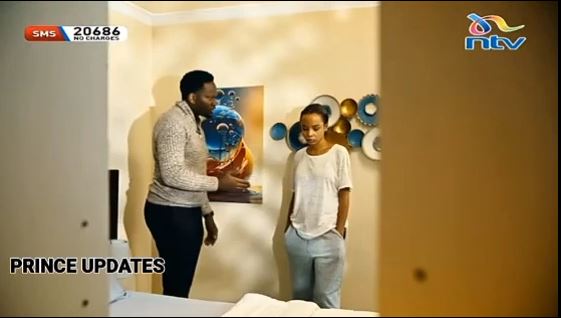The Nnothingg Phone (12): A Fake Phone Flooding the Kenyan Market
The Kenyan smartphone market, known for its appetite for innovative and stylish devices, is increasingly targeted by counterfeit products. Among these, the so-called “Nnothingg Phone (12)” has emerged as a prevalent fake phone, exploiting the rising popularity of the Nothing brand. This article explains why the Nnothingg Phone (12) is a counterfeit device, identifies the original Nothing model it attempts to emulate, and provides practical guidance for Kenyan consumers to avoid purchasing fake phones. Additionally, we’ll share links to trusted retailers where authentic Nothing smartphones can be purchased.
Why the Nnothingg Phone (12) Is a Fake Phone
The Nnothingg Phone (12) is not a legitimate model in Nothing’s official product lineup, managed by Nothing Technology Limited. Several factors confirm its counterfeit status:
- Misspelled Brand Name:
The name “Nnothingg” with extra “n” and “g” letters is a clear indicator of a fake. The authentic brand is spelled “Nothing.” Counterfeiters often use slight spelling variations to mimic the original brand while evading legal scrutiny, relying on convincing packaging to deceive buyers. This tactic mirrors reports of fake phones with misspellings like “Sammsunng” or “iPhonnee” in Kenya’s markets. - Non-Existent Model:
Nothing’s smartphone lineup includes the Nothing Phone (1), released in July 2022, and the Nothing Phone (2), released in July 2023, with no mention of a Phone (12) in their catalog, as verified on Nothing’s official website (intl.nothing.tech). The “Phone (12)” name is a fabricated attempt to sound futuristic and align with Nothing’s innovative branding, confusing consumers seeking unique devices. - Substandard Build and Specifications:
Fake Nnothingg Phone (12) devices typically feature inferior materials, such as cheap plastic bodies, low-resolution displays, and weak processors (e.g., low-end MediaTek chips). These phones may mimic Nothing’s signature transparent design or Glyph interface but deliver poor performance, with issues like lagging, low-quality cameras, or unreliable battery life. Reports of counterfeit smartphones in Kenya, such as fake Samsung and iPhone models, note similar issues with substandard hardware. - Inauthentic Software and Security Risks:
Genuine Nothing phones run on Nothing OS, a clean Android-based interface with regular updates and unique features like the Glyph interface. Fake Nnothingg Phone (12) devices often use generic or modified Android versions, sometimes embedded with malware or intrusive apps, posing significant security risks. A Reddit post about a fake iPhone in Kenya described pre-installed apps like WhatsApp reinstalling automatically, a common trait of counterfeits that likely applies to fake Nothing phones. These devices lack Nothing OS’s customization and updates, compromising user data. - Proliferation in Kenya:
Kenya’s smartphone market is a hotspot for counterfeit devices, with up to 40% of phones estimated to be fake, costing the economy KSh 30 billion annually in tax evasion. The Anti-Counterfeit Authority (ACA) reported seizing counterfeit Samsung phones worth over KSh 10 million in 2019, highlighting the scale of the issue in markets like Nairobi’s Mfangano Street. The Nnothingg Phone (12) is part of this wave, distributed through unregulated channels like street vendors, unverified online marketplaces (e.g., Facebook Marketplace, Jiji.co.ke), and platforms like Alibaba, which list “fake phones” explicitly.
The Original Phone the Nnothingg Phone (12) Is Trying to Emulate
The fake Nnothingg Phone (12) likely attempts to emulate the Nothing Phone (2), a premium mid-range smartphone released by Nothing in July 2023. The Phone (2) is known for its transparent design, Glyph interface, and solid performance, making it a popular choice among tech enthusiasts in Kenya. The “Phone (12)” name is a fabricated variation to mimic the Phone (2)’s naming convention and futuristic appeal, confusing buyers. Below are the key specifications of the authentic Nothing Phone (2), based on details from Nothing’s website and Flipkart:
- Display: 6.7-inch LTPO AMOLED, Full HD+ resolution (1080 x 2412 pixels), 120Hz refresh rate, 1600 nits peak brightness, Gorilla Glass
- Processor: Qualcomm Snapdragon 8+ Gen 1 (4 nm), Octa-core
- RAM/Storage: 8GB/128GB, 12GB/256GB, or 12GB/512GB (non-expandable)
- Camera: Dual rear setup (50MP main with f/1.9 + 50MP ultra-wide), 32MP front camera
- Battery: 4700mAh with 45W fast charging, 15W wireless charging, 5W reverse wireless charging
- OS: Android 13 with Nothing OS 2 (upgradable to Android 15 with Nothing OS 2.5)
- Other Features: Glyph interface with LED notifications, 5G support, IP54 splash resistance, in-display fingerprint sensor
- Price in Kenya: Approximately KSh 45,999–55,000 (2023 retail price for 128GB)
The fake Nnothingg Phone (12) may mimic the Phone (2)’s transparent back or Glyph LED lights, but it typically features inferior components, such as LCD screens, weaker processors, and poor cameras lacking advanced features like Night Mode. Counterfeiters may falsely advertise 5G or the Glyph interface, which are either non-functional or absent in fakes.
Why the Fake Nnothingg Phone (12) Is Flooding the Kenyan Market
Several factors contribute to the proliferation of fake Nnothingg Phone (12) phones in Kenya:
- Nothing’s Growing Popularity:
Nothing has gained traction in Kenya for its unique design and competitive pricing, appealing to tech-savvy consumers. Counterfeiters exploit this by producing fake models like the Nnothingg Phone (12), leveraging the brand’s modern appeal to deceive buyers seeking innovative smartphones. - Price-Sensitive Market:
The Nothing Phone (2) is priced at around KSh 45,999–55,000, making it a premium mid-range option. Fake Nnothingg Phone (12) phones are sold at significantly lower prices (e.g., KSh 15,000–25,000), appealing to cost-conscious buyers. The CA reported that 49% of Kenyan consumers purchase counterfeits due to their low prices, driving the demand for fakes. - Unregulated Sales Channels:
Counterfeit phones are distributed through street vendors, unofficial retailers, or unverified online platforms like Facebook Marketplace, Jiji.co.ke, or Alibaba, which list “fake phones” explicitly. These channels lack proper documentation or warranties, enabling the spread of fakes. The ACA’s raids in Nairobi highlight the prevalence of counterfeit devices in unregulated markets. - Consumer Unawareness:
Many buyers are unaware of how to verify a phone’s authenticity, especially with a newer brand like Nothing. The misspelling of “Nnothingg” and the fictitious “Phone (12)” name may go unnoticed, particularly by consumers unfamiliar with Nothing’s lineup. Reports indicate that only 19% of Kenyans knowingly purchase counterfeits, with many falling victim due to convincing packaging.
How to Avoid Buying Fake Phones in Kenya
To protect yourself from purchasing a counterfeit Nnothingg Phone (12) or other fake smartphones, follow these practical steps, informed by industry best practices and the Communications Authority of Kenya’s recommendations:
- Verify the IMEI Number:
Every smartphone has a unique 15-digit IMEI number. To confirm authenticity:
- Dial *#06# on the phone to display the IMEI.
- Text the IMEI to 1555, a free service provided by the Communications Authority of Kenya, to verify the phone’s legitimacy. You’ll receive an SMS with the phone’s make and model (e.g., Nothing Phone (2)). A fake like the Nnothingg Phone (12) may return an invalid or mismatched result.
- Visit Nothing’s official support page (intl.nothing.tech/pages/support) to contact support and verify the IMEI. Ensure the IMEI matches the number on the box, receipt, and in Settings > About Phone. Discrepancies or invalid numbers indicate a fake. Be cautious, as some fakes use cloned IMEI numbers, so additional checks are essential.
- Purchase from Authorized Retailers:
Buy Nothing phones only from reputable stores or Nothing-authorized resellers. Avoid street vendors or unverified online platforms like Facebook Marketplace, Jiji.co.ke, or Alibaba, which list “fake phones” explicitly. Trusted retailers provide warranties and authentic products. Nothing recommends purchasing from authorized partners like Masoko or Avechi in Kenya. See the list of stores below. - Check Specifications and Software:
Research the phone’s specifications on Nothing’s official website (intl.nothing.tech) before purchasing. Ensure the device runs Nothing OS (e.g., Nothing OS 2 on Android 13 for the Phone (2)) and matches the listed specs, such as the 50MP camera or Snapdragon 8+ Gen 1 processor. Be cautious of phones with generic Android interfaces, pre-installed apps with ads, or outdated software. Test Nothing OS features like the Glyph interface or widget customization. Use apps like CPU-Z or AnTuTu after a factory reset to verify hardware specifications. - Inspect Build Quality and Packaging:
Genuine Nothing phones feature premium materials like Gorilla Glass and a transparent aluminum frame. Look for signs of a fake, such as:
- Misspelled branding (e.g., “Nnothingg” instead of “Nothing”)
- Low-quality packaging with dull colors, flat seals, or spelling errors
- Low-resolution or LCD displays instead of AMOLED
- Cheap plastic builds or non-functional Glyph LEDs
- Compare the box and phone with images on Nothing’s website. Genuine Nothing boxes include precise branding and model details. Counterfeit phones often lack the Glyph interface’s LED functionality or have misaligned designs.
- Test Hardware and Camera:
The Nothing Phone (2) is known for its 50MP dual-camera system and Glyph interface. Test the camera by taking photos; blurry or low-quality results indicate a fake. Check the Glyph LEDs by adjusting notification settings; fakes often have static or non-functional lights. Verify 5G connectivity and performance with demanding apps. Dial #0# to access diagnostic modes (if supported) to test hardware components. - Demand a Warranty and Receipt:
Authentic Nothing phones come with a one-year warranty from Nothing Technology Limited and a proper receipt. Verify the warranty status by contacting Nothing support and ensure the receipt matches the phone’s details, including the model (Phone (2)) and IMEI. Fake phones like the Nnothingg Phone (12) typically lack warranties or have forged receipts. - Be Skeptical of Unrealistic Prices:
If a “Nnothingg Phone (12)” is priced significantly lower than the Nothing Phone (2) (e.g., KSh 15,000 vs. KSh 45,999), it’s likely a fake. Compare prices with trusted retailers. Listings on platforms like Alibaba for “fake phones” at low prices are clear scams.
Where to Buy the Original Nothing Phone (2) in Kenya
To ensure you’re purchasing an authentic Nothing Phone (2) or other genuine Nothing phones, shop at these trusted retailers:
- Jumia Kenya (www.jumia.co.ke):
Jumia offers a range of authentic smartphones, including Nothing phones, with warranties and cash-on-delivery options. The Nothing Phone (2) is priced around KSh 45,999–55,000. - Phone Place Kenya (www.phoneplacekenya.com):
Phone Place Kenya stocks genuine Nothing phones, including the Phone (2) in 8GB/128GB and 12GB/256GB variants, with fast delivery (1–2 hours in Nairobi, 24 hours countrywide) and warranties. - Masoko (www.masoko.com):
Masoko provides genuine Nothing phones from verified vendors in Kenya, with secure payments via M-Pesa and three-hour delivery in Nairobi. The Phone (2) is available at competitive prices. - Avechi Kenya (avechi.co.ke):
Avechi offers authentic Nothing phones, including the Phone (2) in 8GB/128GB and 12GB/256GB variants, with secure payments and discounts. - Gadgets Leo (gadgetsleo.com):
Gadgets Leo provides genuine Nothing phones, including the Phone (2), with online ordering and same-day delivery in Nairobi. - Nothing Official Website (intl.nothing.tech):
Visit Nothing’s official website to find a list of authorized resellers in Kenya or explore online ordering options for the Phone (2).
Before purchasing, confirm the phone model (Nothing Phone (2), not Nnothingg Phone (12)) and verify its authenticity using the IMEI check and other methods outlined above.
Conclusion
The Nnothingg Phone (12) is a counterfeit smartphone that does not exist in Nothing’s official lineup, likely designed to mimic the innovative Nothing Phone (2). Its proliferation in the Kenyan market exploits Nothing’s growing popularity and the demand for stylish, affordable smartphones, but these fakes offer poor performance, security risks, and no official support. To avoid such scams, Kenyan consumers should verify the IMEI through the Communications Authority of Kenya and Nothing’s support, purchase from trusted retailers like Jumia, Masoko, or Avechi, and inspect the device for signs of authenticity, such as the Glyph interface and Nothing OS. By staying vigilant and informed, you can confidently invest in genuine Nothing smartphones that deliver the unique design, performance, and quality the brand is known for.
JUA KALI MAISHA MAGIC BONGO SEASON 10 EPISODE 76 YA JUMATANO LEO USIKU 6TH AUGUST 2025 FULL EPISODE







You must be logged in to post a comment.